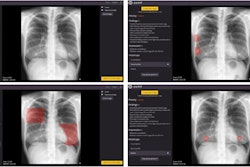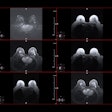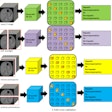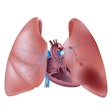 Sanjay M. Parekh, PhD.
Sanjay M. Parekh, PhD.
The medical imaging AI market is forecast to reach almost $2 billion by 2027.1 It continues to evolve with sustained investment and a growing number of regulatory-cleared products. Nonetheless, adoption of AI solutions remains nascent and inconsistent. The market has yet to see widespread adoption of medical AI technologies, which requires widespread adoption for patient use (volumes), demand from referrers (awareness), and appropriate payment to providers (reimbursement).
The application of deep learning and convolutional neural networks to AI-powered technology solutions for medical imaging enables them to offer far greater value and clinical utility than conventional workflow optimization tools. Payors, however, still deem them to be of low value. AI applications are expected to transform radiology, but vendors, providers, and payors need aligned incentives to effect change in patient pathways.
Incentives matter
Knowing which technologies to reimburse, and at what value, is crucial. Franziska Lobig, together with her team of health economists at Bayer and an external consultancy firm, developed a framework to determine just that.2
A good medical AI application should both do what it says it does and do it well, to improve outcomes for patients or providers. For some applications, the value of the application itself may sufficiently serve as the incentive. For others, payors may have to consider separate reimbursement for the AI application.
Lobig et al proposed that radiology AI applications with clinical utility should be reimbursed separately provided they have evidence demonstrating that improved diagnostic performance leads to improved outcomes from a societal perspective, or if improved outcomes can reasonably be anticipated based on clinical utility offered.
In the U.S. and insurance-based healthcare systems where reimbursement is a necessity, such frameworks are necessary to discern which technologies should be reimbursed. However, in many European countries, where the provider and the payer are one and the same, providers will already benefit from the utility of the AI application and reimbursement may be an added incentive.
Real-world reimbursement
Reimbursement for AI applications typically hinges on these solutions delivering improved outcomes for patients, substantiated by real-world clinical studies that show the health economic benefits and return on investment for providers. However, the number of such studies from vendors to date is limited and hence, there is little direct reimbursement.
A recent paper from the NEJM,3 AI presented real-world data confirming that high-value radiology AI technologies are beginning to see adoption. The two use cases realizing exponential growth in the U.S. are cardiac CT and liver MRI; this finding is supported by CMS and commercial insurance coverage and reimbursement.
HeartFlow, with its latest cash injection from Bain Capital, leads the field, and Cleerly is the other cardiac CT company listed as an example of a company that can utilize the cardiac AI CPT codes. Notably, Perspectum (for whom I work) is the only platform company on the list, and one of the few companies from outside of the U.S.
Each vendor was able to demonstrate clinical utility and a sufficient evidence base for their application, enabling them to successfully receive direct reimbursement (outlined in table). Other types of reimbursement, including New Technology Add-on Payments (NTAP), are not included.
| Company | Product | Clinical Utility | CMS Decision (via OPPS pathway unless stated) |
|---|---|---|---|
| HeartFlow | FFRCT | Quantification of coronary obstruction noninvasively and reducing the need for invasive coronary angiogram |
New Technology APC granted in 2018; reassigned to clinical APC in 2022 Included in the 2022 Medicare Physician Fee Schedule (MPFS pathway) |
| Perspectum | LiverMultiScan | Quantification of liver parameters non-invasively and reducing the need for liver biopsy | New Technology APC granted from 2021 |
| Perspectum | MRCP+ | Improved diagnosis of biliary obstruction | New Technology APC granted from 2022 |
| Cleerly | Coronary Analysis | Improved coronary phenotyping | New Technology APC granted from 2022 |
| Optellum | Lung Cancer Prediction | Improved prediction of lung cancer risk | New Technology APC granted from 2022 |
Beyond the U.S., reimbursement and incentives for new AI-powered technologies have not been set, but the shortage of healthcare workers is often more pronounced, so the need may be greater. Japan does have reimbursement for some AI solutions, and in the U.K., the National Health Service also pays separately for some AI applications. However, for most regions across Europe, and for most AI applications, incentives for new technologies have not been established.
Building a case for reimbursement
Direct reimbursement remains sparse or almost non-existent across mainland Europe. According to Prof. Mathias Prokop, chair of the Department of Medical Imaging at Radboud MC, Nijmegen, the Netherlands, Europe is unlikely to see direct reimbursement for AI solutions in the next few years (see AuntMinnieEurope.com article from 2022).
As we have seen, direct reimbursement for AI is dependent on demonstrating improved outcomes for patients, a high bar to attain. AI business cases that build on the monetary value of their time savings need an overwhelming amount of longitudinal supporting evidence. Those solutions that deliver value to the patient beyond time savings can look to the clinical value and utility to prove their worth.
Excitement is currently centered around image analysis AI applications, where multimillion investments have been made. But lack of adoption by healthcare systems has meant that many technologies have failed to achieve revenues for their parent companies. Additionally, most AI tools lack real-world evidence beyond technical validation to justify use by medical professionals.
Being able to do something in an automated fashion does not make that 'thing' necessarily valuable to a clinician or healthcare provider. "The evidence base of most of the stuff that's out there is doubtful. But we realize it's important, and external validation is increasingly demanded," Prokop noted.
The trend will be for more AI systems that perfectly integrate with PACS and RIS to make radiology practices more cost-effective. "The more automation we have, the higher the cost we'll be able to save," he added. But even in this setting, not least for correcting results, human vigilance remains vital. Ultimately though, technologies that result in efficiency gains alone have limited utility, but AI solutions that result in better care pathways and improved patient outcomes will command greater, direct reimbursement.
Sanjay M. Parekh, PhD, works at Perspectum in the U.K., as part of its global strategy and business development team. Prior to this, Sanjay worked at Signify Research (U.K.), where he led the company’s coverage of the medical imaging AI market.
The comments and observations expressed herein do not necessarily reflect the opinions of AuntMinnie.com, nor should they be construed as an endorsement or admonishment of any particular vendor, analyst, industry consultant, or consulting group.
References
- Medical Imaging AI Market Forecasted to Surpass $1.7 billion by 2027 - Signify Research
- To pay or not to pay for artificial intelligence applications in radiology | npj Digital Medicine (nature.com)
- Characterizing the Clinical Adoption of Medical AI Devices through U.S. Insurance Claims (nejmgroup-production.org)



















